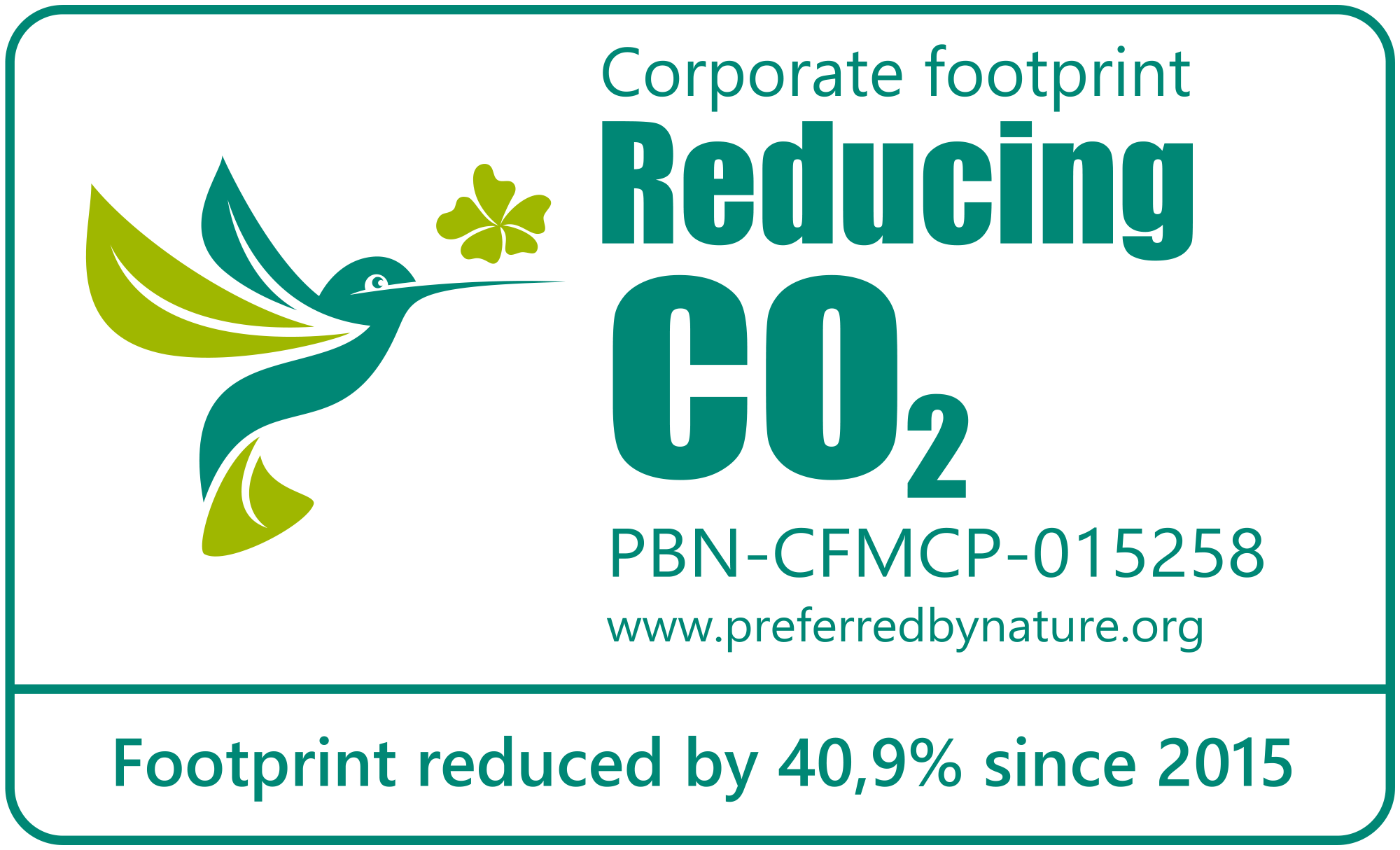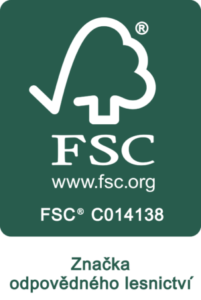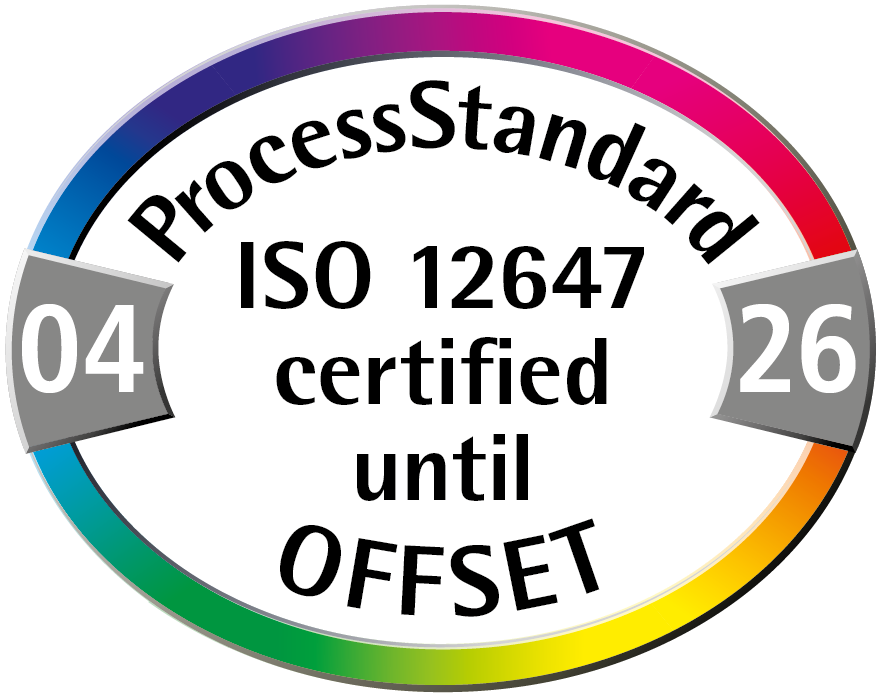Interview Text: Maryla Adamčíková, Jaromír Andrýsek | Photo: Lukáš Duspiva
During his one-year tenure at our printing house, Mr. Jaromír Andrýsek has held several interesting positions in production. Currently, he holds the role of production foreman in FINIDR “B”, however, his work duties are still connected with FINIDR “A”. He gets us into the picture, but also into an understanding of his joys, in today’s interview.
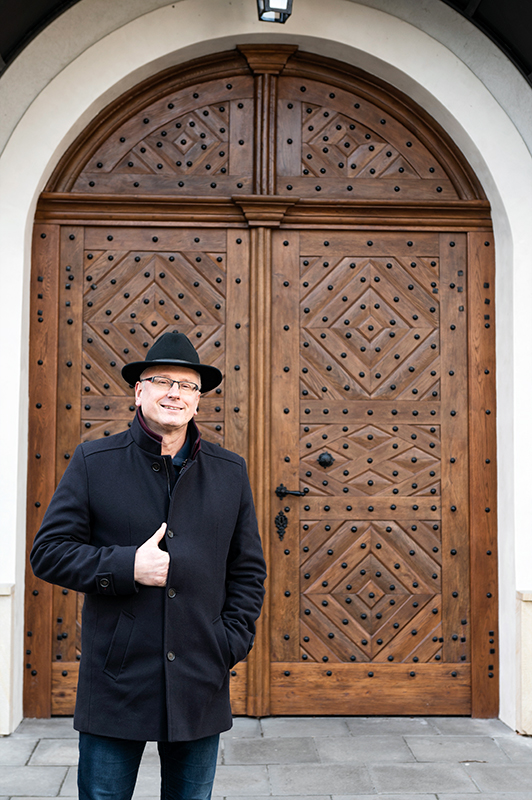
Mr. Andrýsek, at one of the events I had the opportunity to see how passionately you listen to a lecture about the history of the town. History is close to your heart?
Yes, I’m interested in history. I was lucky to have good teachers in elementary school. Then I had an excellent history teacher in high school, and after the military department I was “on the war” with two avid historians. I also like historical novels, in short, history has been with me all my life.
How do you develop this hobby? While studying theology, I became acquainted with the history of the ancient Orient, as well as medieval and modern Europe, but I am also interested in regional history, which I research mainly on walks with my dog. In general I am interested in the history of Těšín, I don’t distinguish the border between Czech and Polish, I perceive the city as a whole. I have lived in Těšín for the longest part of my life, even though I was born in Karviná. Recently I have been exploring the area between Horní Líštná and Cisownice. I went to see the Tuł mountain, in Czech it is Toulec. I’m interested in how place names originate and what they say. The mountain is shaped like a toulce, an arrow tray. Interestingly, Cisownice and Cis are close by and the best bows were made from teak wood. And when I look at Mount Tuł from Zhukov, it also has this shape, just as when I look at it from Vružná. There was a Bronze Age settlement on Tuł, so I wanted to go there to see if there was anything recognizable. The name Vendryně is also interesting, as it lies on the road from southern Europe towards the Baltic. You passed through it into the territory of the Vendi, the Veneti or the Vandals who inhabited the Vistula. You had to go through notches in the mountains. Ryna, or wound, has the same word root. It’s a cut in the hand or in the stone when you carve an inscription in runes. You had to pass through the Vendryn rhyne when you were travelling from the south of the Danube and the Váh, crossing the Jablunkov Pass and Vendryně to the Vistula. All you had to do was board and in a week you were at the Baltic.
It’s a play on words, do you look them up in dictionaries?
I look on the web or I look in different dictionaries. You know what’s interesting? That some municipalities don’t have any mention of etymology, i.e. the origin of their name, on their websites at all. For example, Koshariska, where we have a cottage, has it clear. It’s from kosar, kosary, i.e. portable fences for sheep, and indeed sheep did and still do graze there. In Karpentná, it is all scree, hilly terrain, as I found out while cycling from Bełka to Těšín. Karpentny means rough, bumpy in the dialect. Or for example Karpaty – all your life you hear Karpaty and it doesn’t occur to you that it’s karpate, i.e. rugged, and that it’s mountains. Svatý Kopeček or Dancing Hill above Mikulov is also interesting. I’ve been looking into why Tanzberg or Dance Hill; pagan dance ceremonies were held there and lasted into the Christian period and still retain that name.
What was the most complicated name of a village or hill that you deciphered?
I don’t know if it is the most complicated name, but it is close to all of us from Těšín. I was once looking at wherever the name Těšín occurs, and here I came across a place in eastern Poland near the Ukrainian border where there is not only Cieszyn, but also Zhukov and Czartorija. It seems quite likely to me that the coincidence of the names with our Těšín (and there are even more in that locality) gives the answer to what the original name of Chantoryja actually is. Its peak is “cut in several directions” and whoever cut the sacred mountain is also clear. So it was originally Chertoryje and this name has been preserved near the Ukrainian border, where we encounter the same place names as we do today.
Are you planning a summer or winter holiday for this sightseeing purpose?
At the Baltic I was interested in local history and listened to lectures. However, I am most attracted to the Amber Trail. One of them led through the Těšín region below Čantoryja. When you come out of the forest at its top, you get a view of the Moravian Gate and then across Hungary to the Adriatic. The Amber Trail has been used for at least three thousand years, and plants that originated in the Mediterranean came under the Čantoryja. I didn’t give up and brought back an amber cross from the Baltic.
What else do you enjoy?
I enjoy sports, especially ball sports, I played basketball and football as a youth. I also enjoy hiking and the aforementioned walks around the neighborhood with my dog Husty, a border collie.
You mentioned studying theology, can you tell us more?
First I graduated from the University of Transport and Communications in Žilina. I worked in logistics and in the meantime I was involved in preaching and working with Christian youth. With this motivation, I left for Germany after the revolution in 1995, thinking that I would be better prepared for this ministry. In Germany, I studied a three-year bachelor’s program at a Bible school where I deepened my German. Later, when I was employed by the church, I studied theology in Banská Bystrica at the University of Matej Bel. That was studying while working, a classic five-year program.
What made you do it?
When I was doing the spiritual work, I felt the handicap of not having a school degree in our country. I think you should always be educating yourself in what you’re doing. If not formally, at least informally by taking an interest in your field. So you’ve worked as a minister? First I worked in industry for six years, and after six years I got an offer to go abroad with my family for three years, so I didn’t hesitate. And when I came back, I worked in a church setting for twenty years as a pastor, editor, community center manager.
What paths led you to FINIDR?
I needed to make a change in my life. After twenty years of working in Christian choirs, I returned to the industry. When I was doing ministry work, I was sitting on four chairs. In addition to the clergy work, i.e. preaching, visiting, ceremonies (weddings, funerals), I started a community center (working with the local community, working with children, doing programs for mothers with young children, e.g. “Corking”, but also for men – “Men Cook Differently”), and I ended up running the center. Then I was the editor-in-chief of the Czech-Slovak church magazine “Living Word” and the fourth chair was the leadership of Bible education at the regional level. I was completely exhausted by that. And now I am “healing” from wanting to be active everywhere.
In the beginning of the interview I mentioned that you have had a few interesting positions in production, what were they?
I joined the industrial engineering department, that’s where I started. The first process I monitored was the cutting center. In doing that, I still had some overlap with the logistics I was studying. When there was a shortage of space to deal with pallets of printed sheets, I was put in charge of that. We didn’t have racks for the print pallets yet and we had to start stacking. I collected data on all the stacked pallets and monitored whether stacking still translated into quality after the necessary drying time. We tried it first with black print, then with colour depending on the type of paper. Then I collaborated on the ordering of the racking, drawing and layout of the warehouse rack on Hall B and then the shipping rack on Hall C. This was when I was still in my position as an industrial engineering specialist and monitoring some of the work processes. I did this for about three quarters of my tenure at FINIDR.
I was then put in charge of monitoring the handwork process and when I finished, the owner asked me if I would take a position as a handwork process technician for a while. I really liked it there. Working with the people, the variety, learning a lot of new things, making a few improvements to the layout and equipment, taking over the responsibilities of the original RP process technician, and just when I thought I had the worst of it behind me and would be able to focus on small machines by the end of 2022, a new challenge came along. I was to go help on an expedition where there were personnel changes. My colleague, also an industrial engineer, and I started to address what was needed on the expedition (missing space, new guides, work instructions, etc.).
A month later, another call came, this time from FINIDR “B”, where due to the planned absence of a colleague, it was necessary to cover the position of shift foreman. So I went to “extinguish” there. But already with the prospect that I could stay there. I liked that because I didn’t want to change positions anymore.
I worked my way into the place to the satisfaction of my manager and the end of the Christmas market and the loss of work came. By the end of February, before all the shifts at my new location started, I was helping the process technician in the manual labor area to get the new boxer machine up and running. It’s a machine that glues the box from the bottom and the top. To describe it: you prepare the books on a running table by hand, in one, two or four columns. You put a carton on it and drop it into the machine, which folds it and seals it on both sides, so that a finished sealed box comes out and is manually stacked on a pallet. However, the stacking could also be automated in the future, but that’s a future game for now.
Three to ten people at the table packing orders into boxes. For smaller orders, manual and machine packing are comparable in performance. For larger orders, machine packing is more efficient because it can handle fewer people faster and makes the job easier, which is one of the goals of automation.
The challenge is that we are still in a test run. My job is to go through the test run of the machine, to note the anomalies where it doesn’t work. I’m keeping statistics and evaluating how the machine works and how to use it, picking out the details. We have an awful lot of box sizes and every time the machine has to be reconfigured, i.e. we try to learn the behaviour of the machine to make it usable for as many box sizes as possible. I still have in my job description what I had at the very beginning when I joined the printer, namely improving work processes, and that’s a really interesting job. I’m happy to be working for a company that is building on more than two centuries of printing tradition in our city, and I wish myself and all my co-workers that we will come out of the current economic recession stronger in the end. I believe the Giver of Life never forgets any of us.
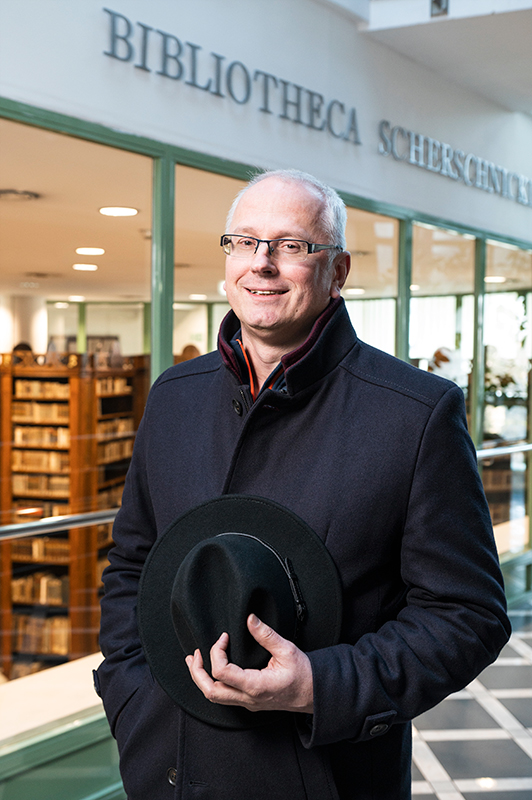
Jaromír Andrýsek
Sign: Scorpio
What do I appreciate most in my co-workers? Friendship and trust, and when people tell you straight how things are.
What has been my favorite thing in life? A student, because I’m always learning and when I learn I smile.
A place name that surprised me with its simplicity? Poniwiec – the name of the stream below the Chantorya that flows through the floodplains, meadows and fields An interesting place I visited Shechem (Nablus in Palestinian) and above it Mount Kabir, from which Abraham saw the entire Promised Land from Mount Hermon to the Dead Sea.
I’m looking forward to… meet anyone who, despite their circumstances, is genuinely happy in their life and shows that they love to live.

